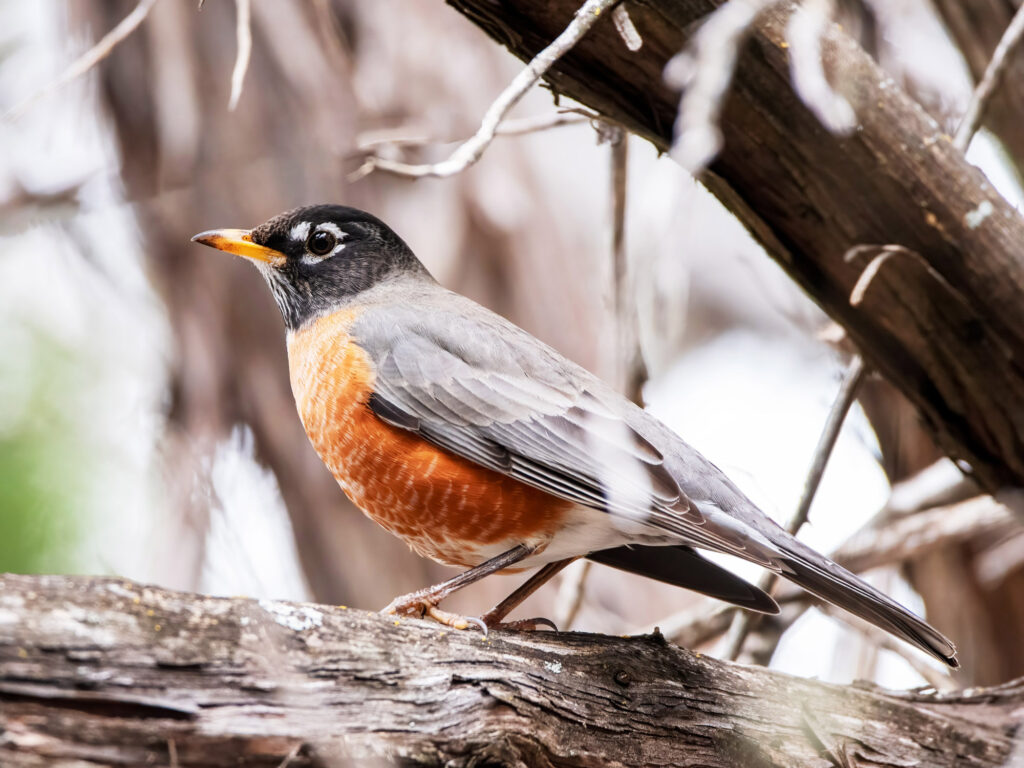AMERICAN ROBIN BIRD, HABITAT, SCIENTIFIC NAME, BEHAVIOR, EGGS, MIGRATION, SOUND AND DIET
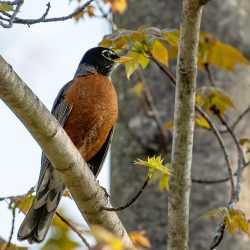
WHERE IS LOCATED THE ROBIN BIRD?
The robin, also known as the American robin, is a well-known and beloved bird species that are native to North America.
SCIENTIFIC NAME
Its scientific name is Turdus migratorius, and it belongs to the thrush family.
COLORS
First, this backyard bird is known for its striking appearance, with its bright orange breast and blue-gray back. It has a plump, round body, and a long tail. Their wings are also distinctive, with white spots on the tips of their feathers.
In fact, males and females look very similar, although the male’s breasts may be slightly more orange.
SOUND
One of the most notable characteristics of the robin is its distinctive song. Robin’s song is a series of clear, melodic phrases that are often described as “cheerily, cheer up, cheer up, cheerily”.
Actually, it’s not just the male robin that sing, female also sing but less frequently. The robin sings throughout the year, but it is most vocal during the breeding season, which typically runs from March through June.
HABITAT
Furthermore, this bird is a highly adaptable bird and can be found in a wide variety of habitats. It is commonly found in forests, woodlands, gardens, and suburban areas. It is also a common sight at bird feeders and can often be found foraging for worms and insects on lawns.
MIGRATION
One of the most remarkable features of robins is their migratory behavior.
They migrate south during the winter months to avoid the cold weather, and they return to the same breeding grounds each spring. During the migration, the robin can travel up to 600 miles in a single day and fly at a speed of around 40 miles per hour.
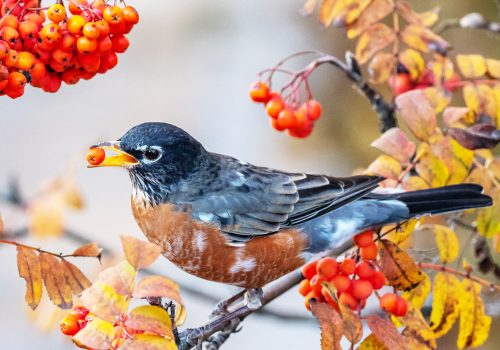
DIET
In terms of their diet, robins are omnivorous and will eat a variety of different foods depending on the season and what is available. Indeed, they primarily feed on worms and insects during the summer months, and fruits and berries during the fall and winter.
They have a long, curved beak that is well-suited for probing the ground for food. Also, they are also known to forage for food on lawns, where they can often be seen pecking at the ground for worms.
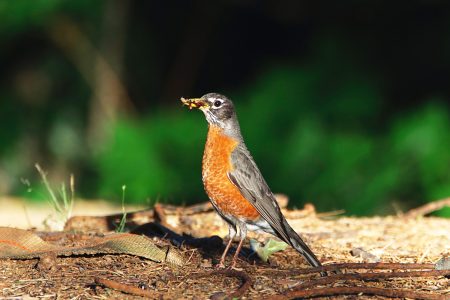
REPRODUCTION
Robins typically lay eggs in a nest built by the female, who is responsible for most of the construction. For instance, the nest is typically a cup-shaped structure made of twigs and grasses and is often lined with mud, which hardens and provides a durable structure.
The female will lay 3-5 eggs at a time, which are pale blue in colour and speckled with brown. Both parents will take turns incubating the eggs, which typically hatch after about two weeks. Once the young hatch, both parents will continue to care for them, bringing food to the nest and keeping the young warm and protected.
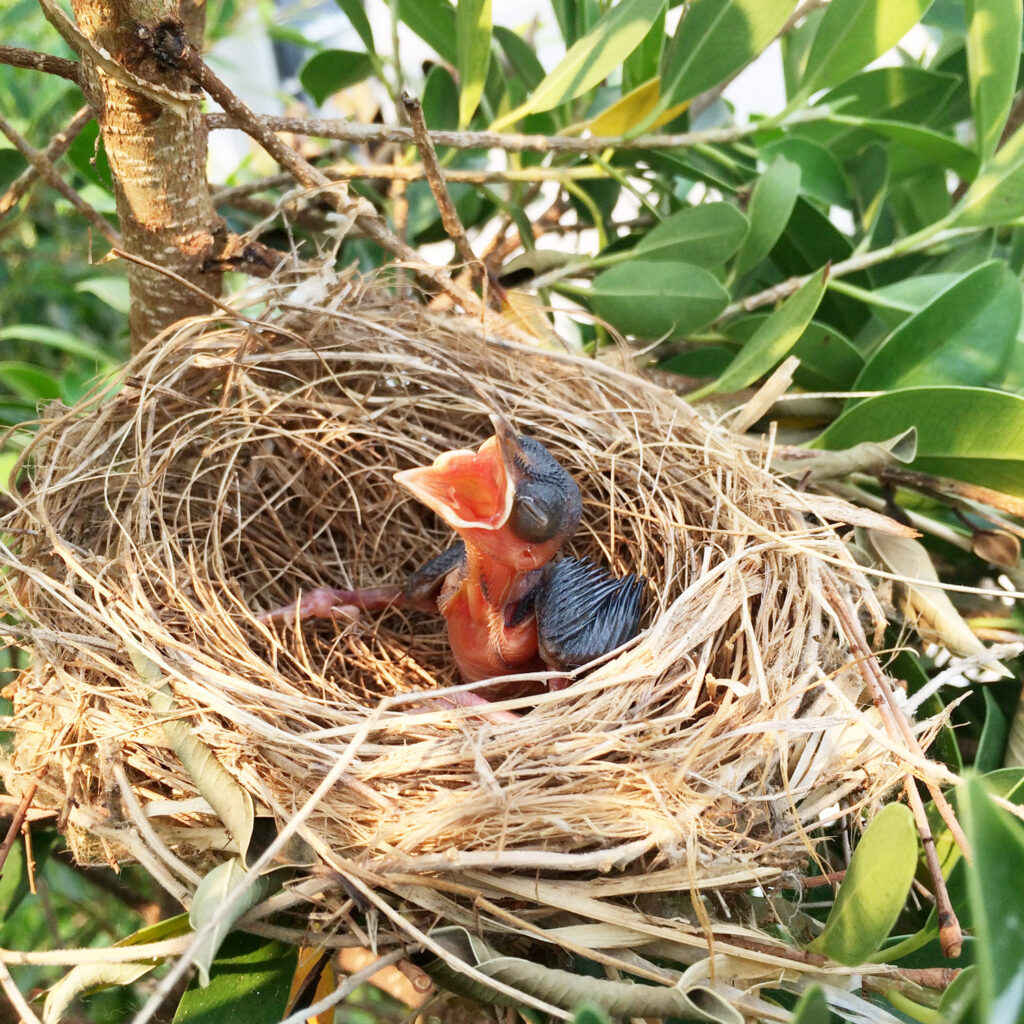
HOW LONG DOES ROBIN BIRD LIVE?
The American robin is a relatively long-lived bird, with an average lifespan of around 12-15 years in the wild.
Although robins have few natural predators, they do face several threats from human activities. Habitat loss and degradation, the use of pesticides and other chemicals, and collisions with buildings and other man-made structures are all significant risks to the robin population.
POPULATION
Despite the threats they face from human activities, the robin’s populations remain stable, and it is a common sight in gardens, woodlands, and other habitats throughout the continent. It is a symbol of spring, renewal and a reminder of the beauty of nature.

HOW DID THEY ADAPT TO URBANIZATION?
Another important aspect of robins is their relationship with human activities and how they have adapted to urbanization. With the expansion of cities and the resulting loss of natural habitats, many bird species have struggled to survive.
They are one of the species that have thrived in urban environments, often taking advantage of human resources, such as bird feeders and gardens.
Studies have shown that robins in urban areas have higher breeding success than those in more rural areas, possibly because of the abundance of food and the lack of natural predators.
BEHAVIOUR
Additionally, Robins have also been studied for their innate ability to adapt to their surroundings, their behaviour changes based on the environment they are living in.
As an example, in urban areas, they tend to lay eggs earlier in the year, to avoid competition for food and other resources. In rural areas, they usually lay eggs later as more resources are available.
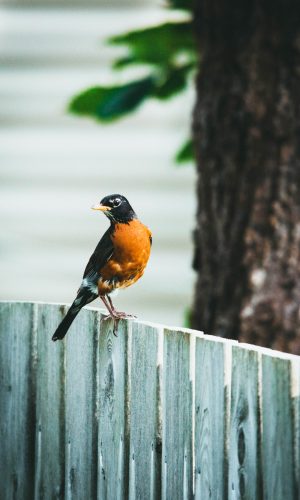
BALANCE
However, it’s important to note that while robins may have adapted to human activities, it is still important to maintain a balance between human development and preserving natural habitats.
For example, human activities such as pollution, pesticide use, and urbanization can still harm robin populations and their environment.
ECOLOGICAL
The American robin is an important bird species in North America, both ecologically and culturally. Ecologically, it plays a key role in controlling insects and other invertebrates, which helps to keep the populations of these animals in check.
CULTURE
Culturally, the robin has been celebrated in literature and song for centuries, and it is often seen as a symbol of spring and renewal.
In conclusion, the American robin is a fascinating bird that has adapted well to human activities, often thriving in urban environments. But it’s important to remember that it is still a wild creature, and its populations and habitats should be protected. By understanding the needs of the robin, we can better coexist with these beautiful birds and appreciate them in our cities and towns. Additionally, we can also take steps to protect their natural habitats, ensuring that future generations can continue to enjoy their melodic songs and striking appearance.
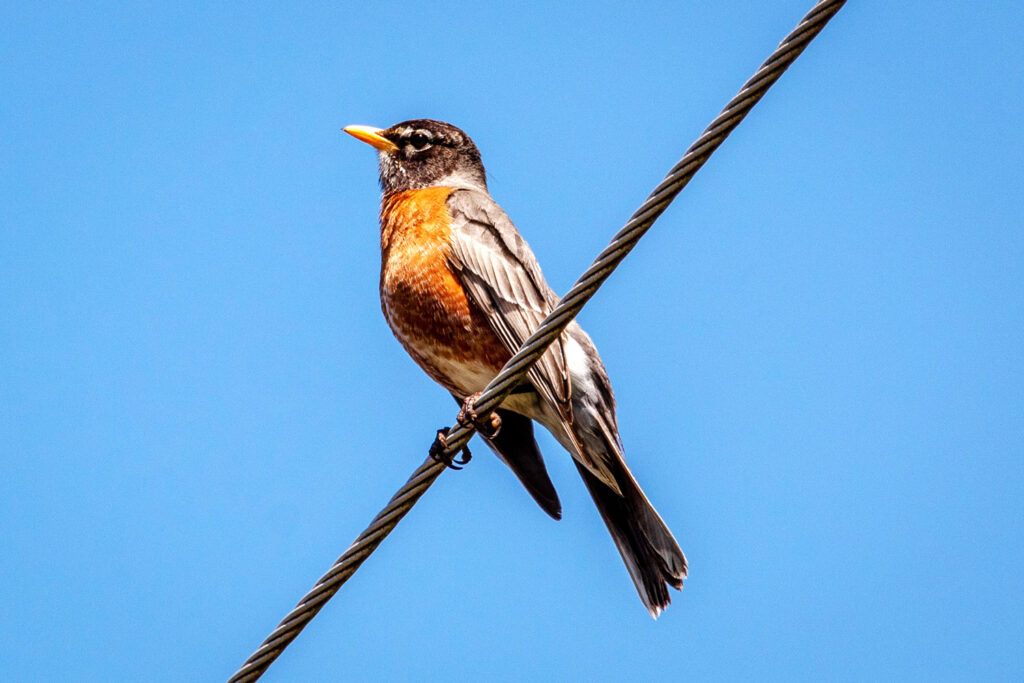
WANT TO LEARN MORE? TAKE A LOOK AT THESE ARTICLES:
- The Scarlet Macaw
- The Scarlet Ibis
- Lovebirds
- The Female Cardinal
- The Great Egret
- The Great Blue Heron
- The American Robin
- The Northern Cardinal
- The Dark-Eyed Junco
- The Blue Jay
- The Gray Catbird
- The Tufted Titmouse
- The Red-winged Blackbird
- The Black-capped Chickadee
- The Evening Grosbeak
- The Common Starling
- The Kiwi Bird
- Wild Birds Unlimited

